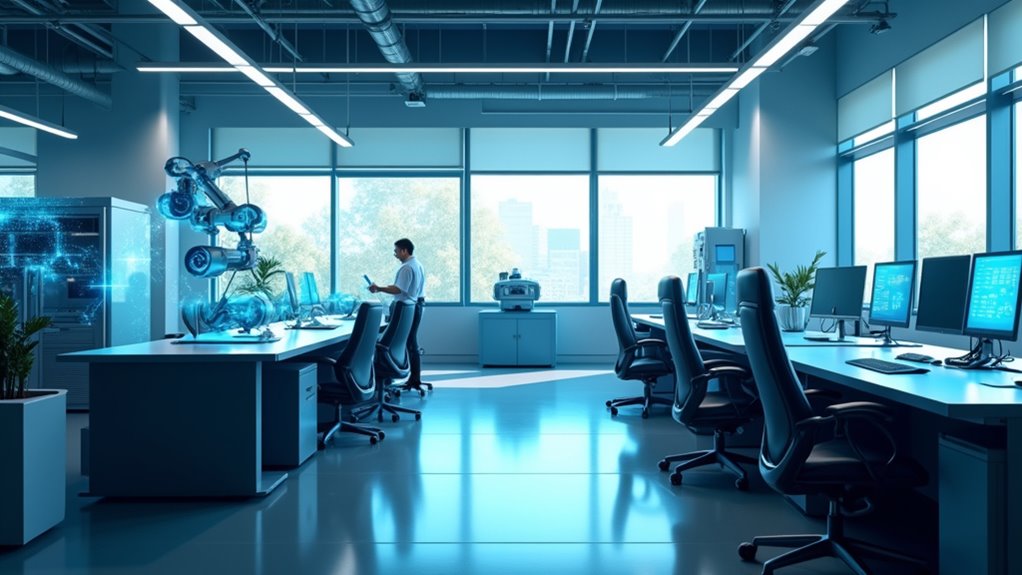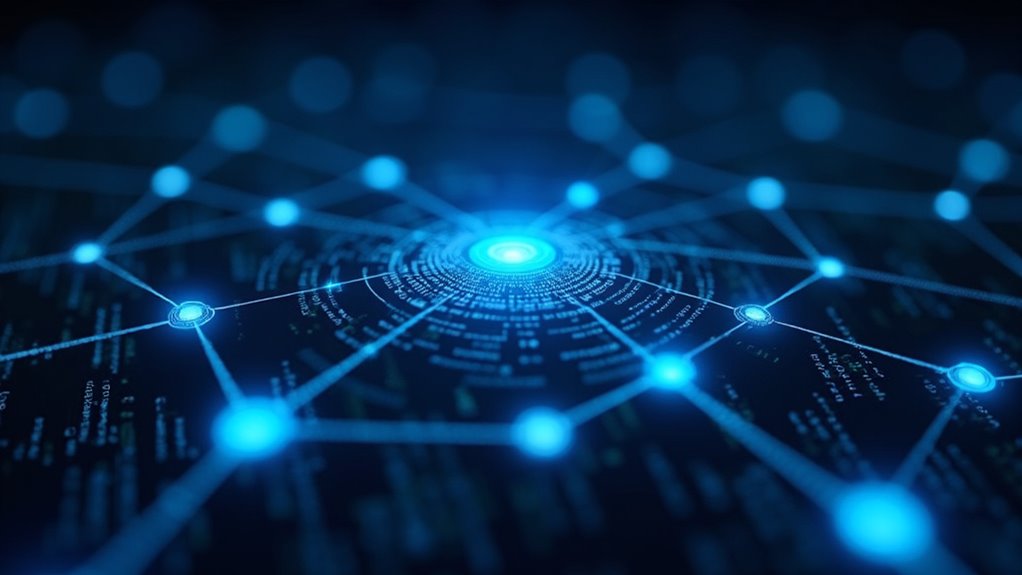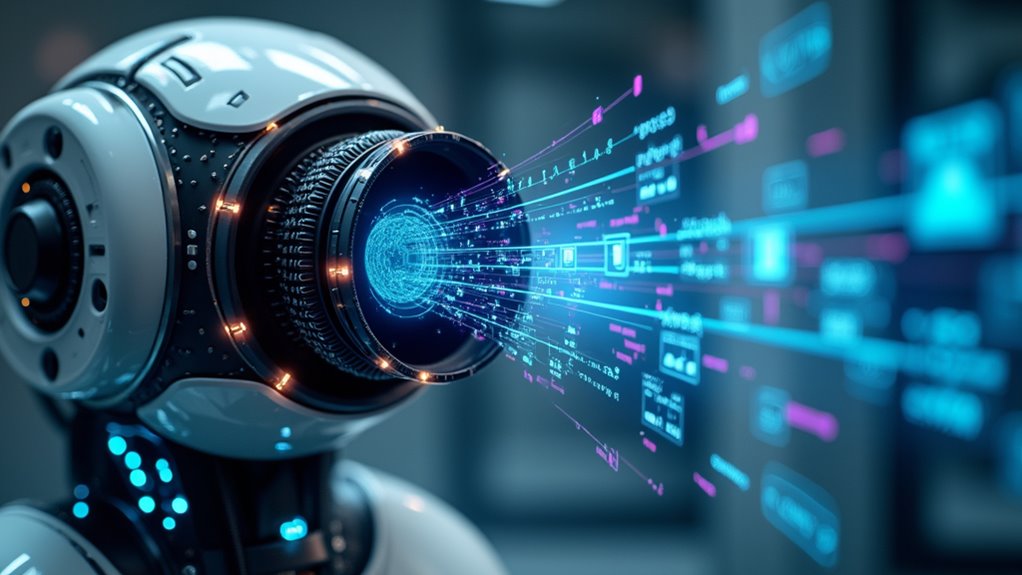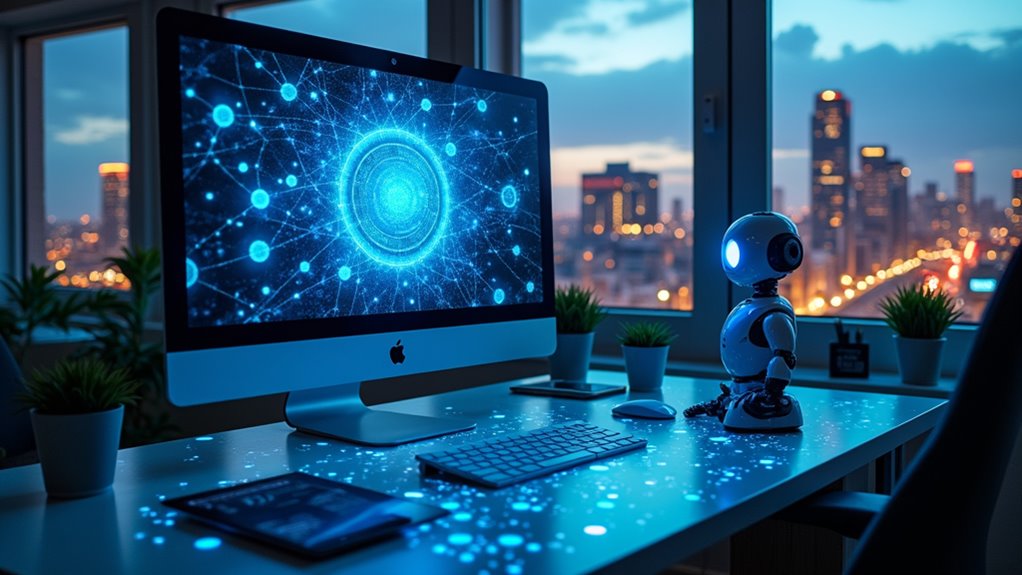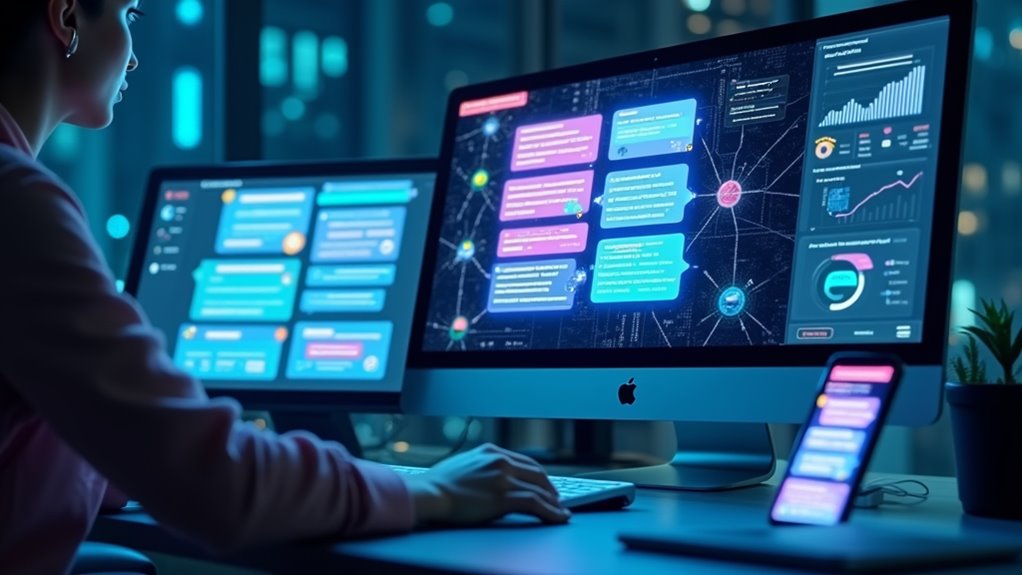AI is radically transforming work, with 75% of workers already using it daily. By 2030, a staggering 800 million jobs could be automated—but don’t panic yet. While 83 million positions may disappear by 2027, new opportunities are emerging simultaneously. The smart move? Start retraining now. Workers who master AI collaboration rather than competing against it will thrive in tomorrow’s job market. The future belongs to those who adapt, not those who resist.

How rapidly is artificial intelligence reshaping our professional landscape? The numbers tell a striking story: 75% of workers already use AI tools daily, and by 2030, a staggering 800 million jobs worldwide could be automated out of existence. This isn’t your grandparents’ industrial revolution, folks—it’s happening at warp speed.
AI Integration isn’t some far-off concept anymore; it’s transforming how we work right now. Look around your office. Notice those routine tasks nobody wants to do? AI’s keenly raising its digital hand to volunteer. With 77% of businesses already implementing or exploring AI solutions, Workforce Transformation is inevitable, not optional. The robots aren’t just coming; they’ve arrived and they’re rearranging the furniture.
AI isn’t waiting for an invitation to your workplace—it’s already rearranged your desk and started the coffee.
But before you panic and start hoarding paperclips for the apocalypse, consider this: AI’s relationship with jobs is complicated. Yes, about 83 million positions could vanish by 2027—particularly in data entry and administrative roles. But simultaneously, new opportunities are emerging. Workers in positions most exposed to AI traditionally earn a higher average of $33.3 per hour compared to those in less exposed roles. One million AI specialist positions will need filling, and demands for roles from agricultural equipment operators to software engineers are growing.
The real question isn’t whether AI will change your job (it will), but how you’ll adapt. Some 120 million workers will need retraining as industry demands shift. Don’t wait for your boss to suggest it; start learning now. Those who master working alongside AI will thrive, while those who resist may struggle. The most valuable employees will be those who cultivate uniquely human capabilities like creativity, empathy, and complex problem-solving that complement AI systems rather than compete with them.
Curiously, despite widespread job displacement fears, many workers view AI positively. Half of businesses believe it improves work-life balance. The technology that threatens certain positions also creates efficiency that could lead to shorter workweeks and more fulfilling tasks. Survey data shows that 90% of workers report that using AI saves time on their daily tasks.
The AI revolution comes with ethical concerns about data protection and transparency. But one thing’s crystal clear: adaptation is non-negotiable. The future workplace belongs to those who can collaborate with artificial intelligence, not compete against it. Ready or not, your professional future includes AI.
Frequently Asked Questions
How Will AI Impact Job Security for Middle-Skilled Workers?
Middle-skilled workers face significant job displacement risks as AI automates routine tasks.
Think data entry today, gone tomorrow. These workers must embrace skill enhancement opportunities or risk obsolescence.
The outlook isn’t entirely grim though – those who adapt can shift to roles requiring human judgment and creativity.
Want job security? Start upskilling now, because AI isn’t waiting for permission to transform your industry.
The future rewards those who evolve alongside technology.
Can AI Systems Be Effectively Regulated Across Global Markets?
AI regulation across global markets faces significant hurdles.
Regulatory challenges arise from conflicting national priorities and enforcement mechanisms. Without international cooperation, companies navigate a messy patchwork of rules—good luck with that compliance nightmare!
Establishing effective global standards requires harmonization of approaches from the EU’s strict AI Act to Singapore’s voluntary guidelines.
The path forward? Countries must collaborate on interoperable compliance frameworks while balancing innovation protection and risk mitigation—easier said than done in today’s fragmented regulatory landscape.
What Mental Health Issues Arise From Ai-Human Workplace Collaboration?
AI-human workplace collaboration introduces significant mental health challenges.
When robots become colleagues, workplace anxiety skyrockets as employees worry about obsolescence and constant upskilling demands. Stress management becomes essential, not optional.
Workers experience burnout from adapting to ever-changing technological environments, while feeling pressured to compete with machines that never sleep. Emotional responses range from frustration to depression.
The solution? Organizations must implement robust support systems—because throwing people into the AI deep end without a life jacket is just bad business.
How Are Educational Systems Adapting to Prepare for AI Integration?
Educational systems are undergoing significant transformation to meet AI’s arrival.
They’re revamping curriculum changes to include computational thinking and ethics across subjects—not just in tech classes.
Teacher training has become non-negotiable, with educators scrambling to understand AI tools before their students do.
Schools are balancing infrastructure needs (decent Wi-Fi, anyone?) with ethical considerations.
The smart ones aren’t just teaching about AI; they’re using adaptive learning platforms to personalize education while maintaining human connections.
Will AI Create Greater Economic Inequality Between Developed and Developing Nations?
AI will likely amplify economic disparity between nations.
Without proper intervention, the technological divide grows wider daily—developed countries racing ahead while developing nations struggle to keep up.
Infrastructure gaps, limited fiscal resources, and workforce displacement create a perfect storm.
Sure, AI offers potential benefits for all, but let’s be real: without targeted policies, global cooperation, and serious investment in education and infrastructure, AI’s rewards will flow primarily to those already ahead in the digital race.
